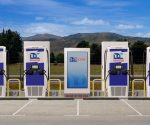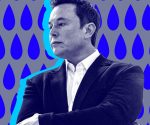Foxconn is dangling a shiny new EV plant in front of Wisconsin
[ad_1]
iPhone builder Foxconn is dangling a massive electric vehicle project in front of Wisconsin after burning the state with promises of a multibillion-dollar LCD factory that never happened. The Taiwanese conglomerate has also already fallen behind its own arbitrary deadline for choosing where it will build the factory.
The Taiwanese conglomerate said Friday that it has started talks to the Wisconsin Economic Development Corporation (WEDC) about making EVs with California startup Fisker Inc. at the mostly empty site it owns in the state. This is despite chairman Young Liu saying in March that he would decide between building EVs in Mexico or Wisconsin by July 1st, and Foxconn and the WEDC agreeing to a far smaller tax subsidy package in April that reflected the failure of the LCD project.
Why did Foxconn take a new deal with the WEDC in April when it knew it had EV ambitions in March, only to announce another negotiation with the state in July? Well, because that’s how things go with Foxconn in Wisconsin.
“As part of the site selection process, Foxconn and Fisker have engaged with the Wisconsin Economic Development Corporation to discuss plans for electric vehicle manufacturing,” Foxconn said in a statement. Foxconn and Fisker Inc. first announced their partnership in February and have since shared that they plan to build a low-cost electric sedan, currently called Project PEAR, which stands for “Personal Electric Automotive Revolution.” The two companies signed a framework agreement in May.
If Foxconn ultimately does move forward with trying to build EVs in Wisconsin, it would be another huge promise to a state and a workforce that it has already mightily burned by the company. Foxconn broke ground on the Wisconsin facility in 2018 and said it would invest $10 billion and build a 20 million-square-foot factory that would pump out LCD panels. Former President Donald Trump said it would be the “eighth wonder of the world.” The whole effort was supposed to create 13,000 jobs. In return, the company was going to get $4 billion in tax credits and other incentives from state and local governments. The local government in Mount Pleasant demolished entire neighborhoods to clear land for the proposed factory.
But the project has languished ever since. Foxconn struggled to meet the most basic hiring goals. It has invested just 3 percent of the $10 billion that it promised, and the biggest standing facility on the property measures just 1 million square feet. The company recently agreed to reclassify the building as a storage facility in official documents, and in April, Foxconn and the WEDC agreed to amend their contract to reflect the current, far more meager ambitions.
David Callender, a spokesperson for the WEDC, told The Verge in an email that it is the agency’s policy “not to comment on any discussions it may or may not have with a business unless and until a contract is executed.” The agency also cited similar grounds when it denied a public records request from the Milwaukee Journal Sentinel about the talks with Foxconn and Fisker Inc., the outlet reported on Friday.
Foxconn has spent the last year and a half racking up deals in the EV world. It has agreements with startups that have yet to put a car into production like Fisker Inc. and Byton, a Chinese startup owned by state-run First Automotive Works. The conglomerate has also discussed making EVs with established companies like Stellantis (the company created following the recent merger of Fiat Chrysler and France’s PSA Group) and the largest private automaker in China, Geely. The Geely deal may also result in Foxconn working with Faraday Future (the Chinese automaker recently negotiated a stake in the California startup). Foxconn even recently announced its own electric vehicle platform that it hopes to sell to other automakers, and it’s working with Taiwanese company Gogoro on electric scooters and battery technology.
Liu, who took over the Wisconsin project after Foxconn founder Terry Gou left the company, said in March that he “need[s] to find a product that fits that location.” It’s a search that has stretched on for more than a year now, as Foxconn has considered making everything from coffee robots to ventilators at the facility. Still, Liu said at the time that there was no guarantee Foxconn would choose to build electric vehicles at the site. “Whether it’s Wisconsin or Mexico, it’s not political, it’s business from my perspective,” he said in March.
Wherever they wind up trying to build it, Fisker Inc. and Foxconn have said they plan to start production on the EV by the end of 2023. Fisker Inc.’s first vehicle, the Ocean SUV, is supposed to go into production in November 2022. It will be built in Austria by automotive supplier Magna.
[ad_2]
Source link










